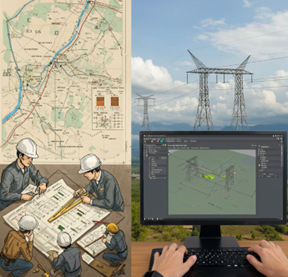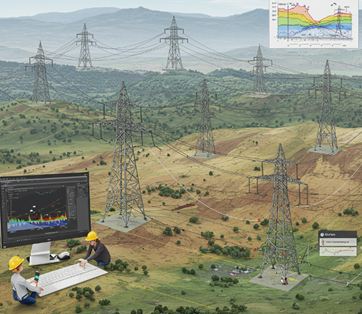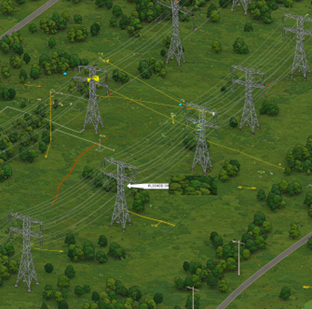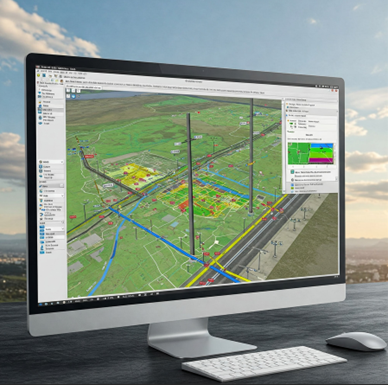
Electricity has become an invisible yet indispensable thread in our modern world. From the moment we wake up to the moment we rest our heads at night, electricity powers our routines: charging our phones, powering appliances, and connecting us to the world through internet.
Today, power outages seem like a thing of the past in big cities. This is possible due to a combination of factors: increased power generation capacity, improved transmission, and infrastructure distribution. However, technological advancements in this sphere are becoming increasingly significant.
An inefficient and inadequate power grid make power outages a deeper issue. Overburdened systems, aging infrastructure, and a lack of real-time monitoring contribute to frequent disruptions that still plague many parts of the country. As the power industry evolves, so too does its demand for tailored solutions that meet its unique challenges and aspirations.

Evolving Power Grid Design
There was a time when power grid planning and design meant endless hours of manual calculations and physical surveys. Engineers used to calculate the load distribution, line tensions, and clearance requirements manually, which is a complex and time-consuming process. Much like how we evolved from table telephones to smartphones, paper maps to digital navigation, power grid design has undergone its own technological renaissance.
At the heart of this modernization lies a suite of advanced technologies, of which PLS CADD modeling stands out. From identifying optimal power line routes to designing robust structures and calculating precise sag and tension values, this software is emerging as an indispensable tool in the realm of power grids.

The New Power Line Precision Architect
In the intricate landscape of power grid management, precision and efficiency are paramount. Power Line System Computer-Aided Design and Drafting (PLS CADD) modeling brings unprecedented accuracy to power line design. It meticulously models and analyzes the optimal positioning of structures to the precise calculation of conductor behavior under varying weather conditions.
PLS CADD modeling allows engineers to map out the intricacies of power lines, ensuring optimal routes and robust structures. This sophisticated software takes into account various factors that may be overlooked manually – thermal ratings, dynamic loading conditions, and how difference in terrain may affect the line performance. This level of precision ensures functionality and is optimized for reliability and safety.

The Power of 3D Visualization
One of the most powerful features of this modern grid design technology is its ability to create detailed 3D visualizations of power line corridors. These are not merely graphics but precise digital representations that allow engineers to identify potential conflicts, assess environmental impacts, and communicate designs effectively with stakeholders. These visual tools bridge the gap between technical teams and stakeholders, offering a clear understanding of infrastructure and potential conflicts. Engineers can virtually walk through a proposed power line corridor, identify bottlenecks, assess system performance, and evaluate the impact of changes to the network, ensuring accurate and reliable results.

Seamless Integration of GIS Data
The 3D visualizations combined with GIS data provides a holistic view of power grids, facilitating informed decision-making and enhancing network planning and maintenance. By connecting engineering tools with advanced mapping systems, engineers gain access to a rich tapestry of geographical, environmental, and infrastructure information in real time.
Today’s power infrastructure design transcends traditional boundaries by weaving together multiple layers of critical data. Imagine overlaying detailed terrain maps, existing utility corridors, environmental sensitivity zones, and urban development plans – all while designing new power routes. This comprehensive view transforms the planning process from isolated design work into informed decision-making that considers the full context of our complex landscape. The result is infrastructure that doesn’t just exist within its environment – it harmonizes with it.

Empowering Our Electric Future
As our power needs grow more complex, with renewable energy integration and increasing demand for reliability, PLS CADD modeling becomes even more crucial. The software continues to evolve, incorporating new capabilities that help engineers meet these challenges. The power grids of tomorrow require more than just physical infrastructure – they demand intelligent design backed by sophisticated modeling capabilities. Working with experienced partners who understand both the technology and its real-world applications can transform how organizations approach their grid design and maintenance.
The right expertise not only enhances operational efficiency and safety but also empowers better decision-making throughout the infrastructure lifecycle. As we continue to rely more heavily on electricity in our daily lives, this combination of advanced technology and deep industry knowledge ensures that our power infrastructure remains robust, reliable, and ready for whatever the future holds. After all, the goal isn’t just to keep the lights on – it’s to build a more resilient and sustainable electrical future for generations to come.